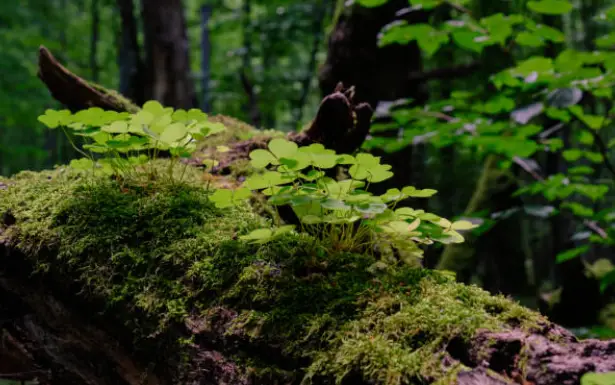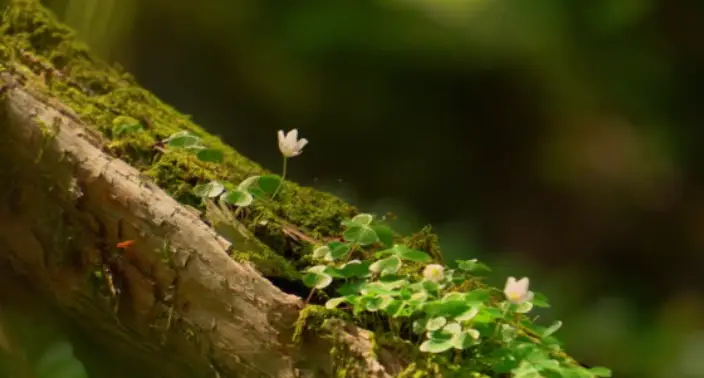The Hidden Gems of the Plant World: Blooming Moss Plants
Usually, when people think of plants that bloom, they think of vibrant flowers like tulips, roses, and lilies. But mosses are a sometimes disregarded class of plants that can have stunning blooms.
Despite their modest size, these little bryophytes are real works of nature if you take the time to examine their tiny blooms up close.
What Are Moss Plants?

It is critical to grasp the basics of mosses before delving into the nuances of flowering moss species. Due to their absence of vascular tissues, which are necessary for the circulation of nutrients and water in larger plants like trees and flowers, mosses are classified as non-vascular plants. Rather, mosses use their leaves and stems to absorb nutrients and water.
Mosses do not reproduce by seeds; instead, they reproduce by spores, and their reproductive cycle depends on access to water. The carpets of beautiful green moss that grow in moist, shady places like forests are recognizable to most people. But mosses are actually made up of more than 12,000 distinct species that may be found all over the world, with a remarkable array of colors, textures, and patterns.
The Blooming Process
Mosses go through various reproductive stages that lead to the creation of moss “blooms,” just like blooming plants do. When certain environmental factors are met, like sufficient moisture content, mosses will create structures known as archegoniophores or antheridiophores. These are the reproductive structures of the male and female, respectively.
The sperm released by the antheridiophores have to navigate a layer of water in order to get to the egg inside the archegoniophores and fertilize it. Following fertilization, the archegoniophore grows into an elevated sporophyte capsule on a thin stalk known as a seta.
The moss plant’s blooms are these capsules, which are sometimes called “moss flowers.” Depending on the species, they can have a range of shapes and colors, including spherical, urn-shaped, and cylindrical, as well as hues like green, brown, red, or yellow. Some have unique characteristics, such as twisted peristome teeth that regulate the release of spores.
While the capsules themselves are very small, usually only a few millimeters in size, their bright colors and unique shapes make them utterly captivating when viewed up close. Mosses bloom at different times depending on the species and environmental conditions, but for many, the peak blooming period is spring and early summer.
Incredible Moss Diversity
With over 12,000 species, mosses display incredible diversity in their blooming characteristics. Here are just a few examples of some remarkable blooming moss plants:
1. Splendid Feather Moss
Found in New Zealand, this moss gets its common name from its feathery appearances and dazzling red-orange blooms. Its capsules have a unique curved or hooked shape.
2. Blushing Bryum
One of the most common mosses around the world, this species produces tall spore capsules that blush a deep reddish-purple color when mature and exposed to sunlight.
3. Swan’s Neck Moss
Native to the British Isles, the curved capsules on this moss plant resemble tiny swan’s necks extending from the center of the plant. They start out green before turning reddish brown at maturity.
4. Chalice Vase Moss
A moss from Tasmania, the capsules of this species have the appearance of miniature golden vases or chalices. Combined with the bright green plants, they make for a striking visual display.
5. Golden Moss
While the blooms of this European moss aren’t overly ornate in shape, their clusters of reddish-gold capsules create a shimmering, almost bejeweled look among the pale green plant leaves.
Growing and Appreciating Blooming Mosses
Even while mosses can grow naturally in the right conditions, enthusiastic gardeners and nature lovers can also cultivate them in terrariums. There are numerous nurseries and internet merchants who specialize in blooming moss plants and have a large selection of varieties.
You will need a terrarium, glass container, or well-drained moss dish in order to cultivate and view blooming mosses. Make use of a soil mixture designed especially for acidic plants like mosses. Make sure there is constant moisture by misting frequently, and make sure there is strong, indirect light.
Making a mini-terrarium-style moss viewing scope is a great method to get a close-up look at moss blossoms. Using these scopes, it is simple to see all the amazing intricacies of the tiny moss leaves, stalks, and capsules that make up the plants.
While their blooms may not be as large or showy as garden flowers, moss blooms absolutely deserve to be appreciated for their intricate beauty and the fascinating reproductive cycle they represent. Like looking through a microscopic lens into another world, observing these diminutive wonders bloom is an experience sure to astound.
So take the time to look a little closer at the mossy areas around you; you may discover tiny botanical gems hidden in plain sight. By growing and appreciating blooming moss plants, you’ll gain a whole new level of amazement for these ancient, resilient life forms. In their own unique way, moss blooms will redefine your view of what constitutes a beautiful, remarkable flower.




